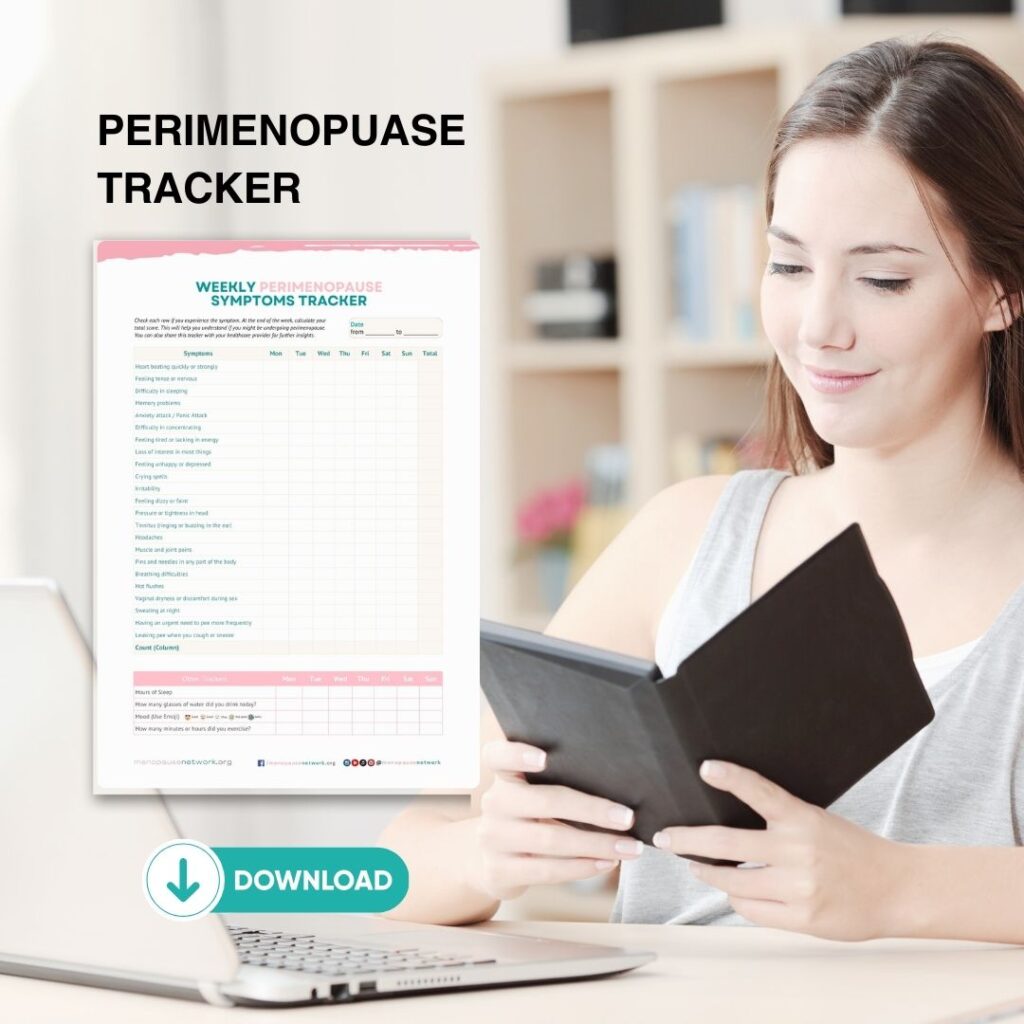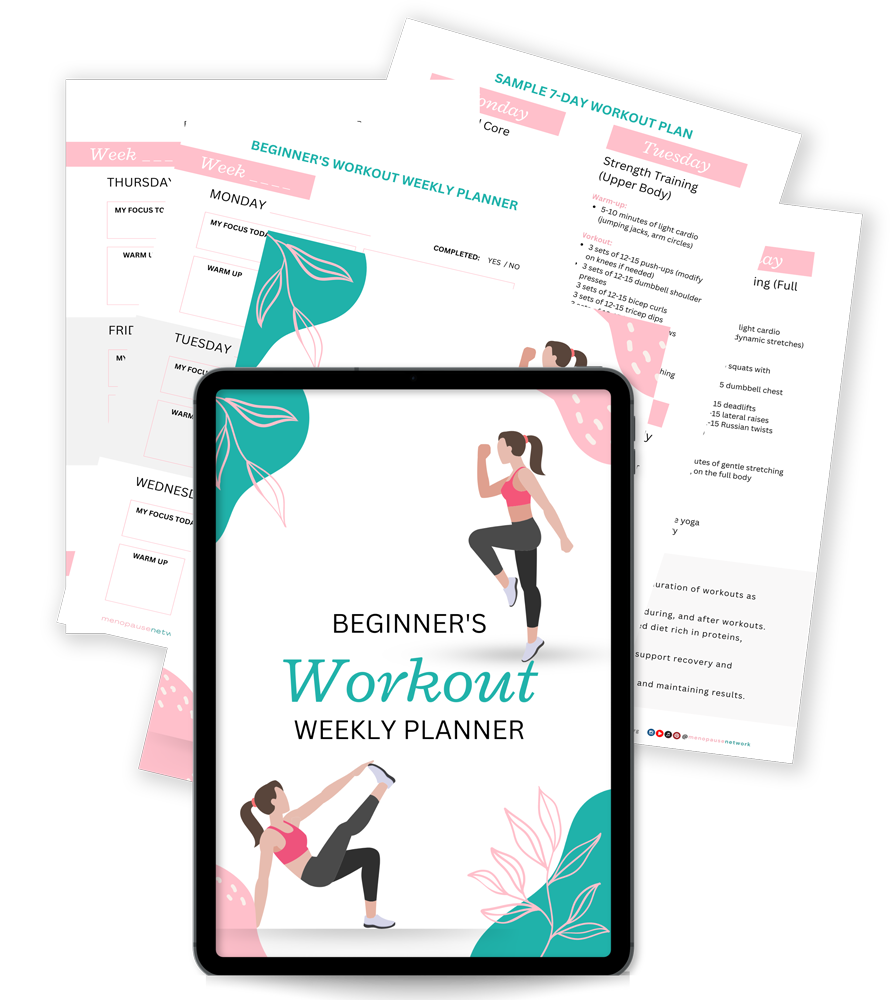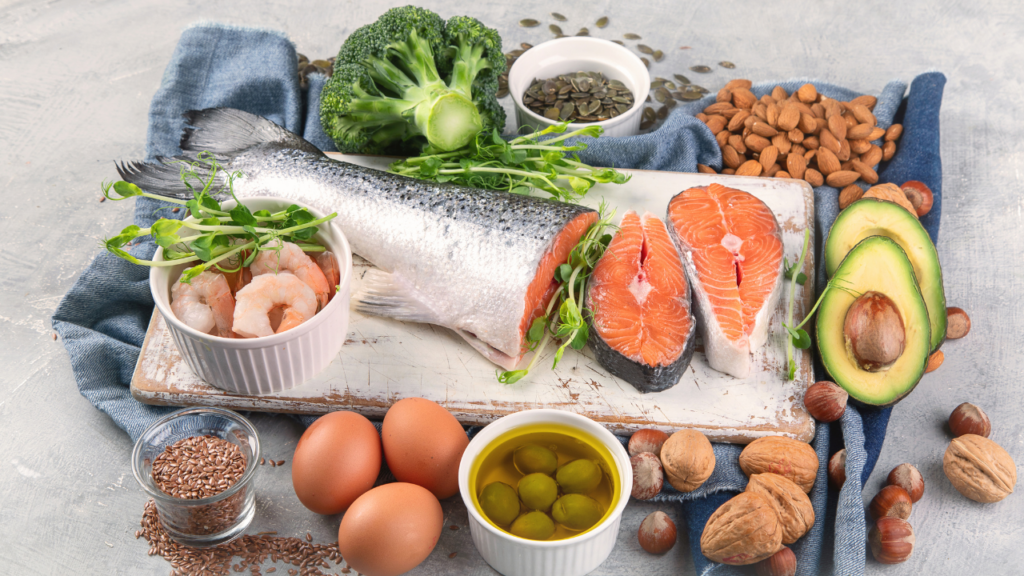What’s Normal and What’s Not: A Perimenopause Reality Check
Girls, no one really prepares you for perimenopause. It just shows up one day—uninvited—and starts moving the furniture around inside your body.
One week you’re on top of things, the next you’re crying because you dropped a spoon. Your period is all over the place, sleep becomes a joke, and suddenly you’re googling things like, “Can hormones make you feel like a stranger in your own body?”
If that sounds like you, first: take a breath. You’re not going crazy. And no, this isn’t just stress. What you’re likely going through is perimenopause—a completely normal (but often misunderstood) stage of life.
So let’s break it down, woman to woman. We’re going to talk about what’s normal, what’s not, and what you can actually do about it.
What Exactly Is Perimenopause?
Perimenopause is the transition leading up to menopause. It can start in your 40s, sometimes even late 30s, and can last several years. The word literally means “around menopause,” and it refers to the time when your ovaries gradually start producing less estrogen.
Eventually, perimenopause ends when you’ve gone 12 full months without a period—that’s when you officially enter menopause. But until then, your hormones fluctuate wildly, and those fluctuations can mess with pretty much everything: your cycle, your sleep, your skin, your mood, your brain, your energy, and your weight.
According to the North American Menopause Society (NAMS), this stage is natural, but that doesn’t mean it’s easy. Many women are surprised by just how much their bodies—and minds—change during this time.
Let’s Talk Symptoms: What’s Normal, What’s Not
Okay, here’s where things get real. Below are some of the most common perimenopausal symptoms—and guidance on whether they’re considered typical or worth a second look.
1. Irregular Periods
One of the first signs of perimenopause is changes in your menstrual cycle. Your periods might be shorter, longer, heavier, lighter, or just erratic. Some months they’ll show up late; others, they’ll show up twice.
Normal:
- Periods that come closer together or farther apart
- Spotting or light bleeding between periods
- Heavier or lighter flow than usual
Not Normal:
- Bleeding that lasts longer than 10 days
- Soaking through pads or tampons every hour
- Bleeding after sex or between periods with no clear pattern
If your period is dramatically different—or interferes with daily life—it’s time to talk to your healthcare provider.
2. Hot Flashes and Night Sweats
Feeling suddenly flushed, overheated, or drenched in sweat, especially at night? You’re not imagining it.
According to the Mayo Clinic, about 75% of women in perimenopause experience hot flashes, which can last anywhere from 30 seconds to 10 minutes. Night sweats are essentially hot flashes that strike during sleep, and they’re just as disruptive.
Normal:
- Sudden waves of heat, usually in the face, neck, or chest
- Sweating followed by chills
- Disruption to sleep patterns
Not Normal:
- Hot flashes that start before age 40
- Symptoms so severe they cause fainting or interfere with work or daily life
If your hot flashes are frequent and debilitating, a provider can help you find relief.
3. Mood Swings, Anxiety, and Irritability
One minute you’re laughing, the next you’re furious, and by dinnertime you’re in tears. Sound familiar?
Fluctuating estrogen levels affect neurotransmitters like serotonin and dopamine, which influence mood and emotional regulation.
Normal:
- Increased sensitivity or irritability
- Emotional ups and downs
- Feeling overwhelmed more often than usual
Not Normal:
- Persistent sadness or hopelessness
- Anxiety that interferes with daily function
- Thoughts of self-harm or worthlessness
Mental health during this phase is critical. Don’t hesitate to ask for support.
4. Trouble Sleeping
Falling asleep and staying asleep becomes a nightly challenge. You may wake up too early or toss and turn for hours.
Normal:
- Insomnia or restlessness, especially around your period
- Waking up in the middle of the night feeling hot or anxious
- Occasional fatigue during the day
Not Normal:
- Chronic insomnia that affects concentration, mood, or physical health
- Sleep disorders that persist for weeks or months without relief
If lifestyle changes don’t help, there are treatment options, both hormonal and non-hormonal.
5. Brain Fog and Forgetfulness
If you’re struggling to recall names, misplacing everyday items, or walking into rooms and forgetting why—you’re not alone.
Estrogen plays a role in cognitive function, so dips in hormone levels can make you feel mentally slower.
Normal:
- Occasional lapses in memory or focus
- Feeling mentally scattered during high-stress days
Not Normal:
- Noticeable cognitive decline affecting your job or relationships
- New or sudden confusion
Again, it’s about noticing patterns. A journal or symptom tracker can help.
6. Weight Gain and Body Changes
Suddenly gaining weight—especially around the belly—is one of the most common complaints in perimenopause. It’s not just diet or exercise changes; hormonal shifts slow metabolism and change how fat is stored.
Normal:
- Gradual increase in belly fat
- Difficulty maintaining your previous weight
Not Normal:
- Rapid, unexplained weight gain or loss
- Extreme bloating, pain, or gastrointestinal changes
Make sure to rule out thyroid or metabolic conditions if the weight gain is dramatic.
7. Vaginal Dryness and Decreased Libido
Lower estrogen levels mean less lubrication and thinner vaginal tissues. Sex might feel uncomfortable—or your interest might completely vanish.
Normal:
- Vaginal dryness or itching
- Less spontaneous sexual desire
Not Normal:
- Pain during sex that doesn’t improve with over-the-counter remedies
- Bleeding during or after intercourse
There are non-hormonal lubricants, prescription creams, and therapies that can help. You don’t have to silently suffer.
Red Flags to Watch For
Let’s be clear: Just because something is common doesn’t mean it should be ignored. Here are signs it’s time to check in with your provider:
- Heavy, prolonged bleeding or bleeding between periods
- Severe or sudden depression or anxiety
- Chest pain or heart palpitations
- Intense hot flashes or fainting episodes
- Unusual pelvic pain or pressure
So… What Can You Actually Do?
Let’s get to the part that matters most: feeling better.
1. Track Your Symptoms
The first step is understanding what’s going on. Use a perimenopause tracker or journal to log symptoms, cycle changes, sleep patterns, mood, and anything else that seems off. This information is invaluable during medical consultations.

Free Download
Perimenopause Tracker
- Monitor Symptoms: Track physical and emotional changes daily.
- Identify Patterns: Discover triggers and patterns in your symptoms.
- Improve Communication: Share accurate details with your healthcare provider.
- Take Control: Empower yourself with insights to make informed decisions about your health.
2. Move More (But Gently)
You don’t need to train like an athlete—just move your body consistently. Walking, yoga, strength training, or dance can improve mood, sleep, and metabolism. Even 30 minutes a day can make a difference.
3. Eat for Hormonal Health
Focus on fiber-rich fruits and vegetables, healthy fats, and lean protein. Limit sugar, alcohol, and ultra-processed foods. Include phytoestrogens (from soy, flaxseed, and legumes), which may help ease symptoms.
4. Prioritize Sleep
Create a consistent nighttime routine. Limit screens before bed. Keep your room cool and dark. And if sleep remains a struggle, talk to a healthcare provider about supplements or behavioral strategies.
5. Manage Stress
Chronic stress worsens hormonal imbalances. Consider meditation, breathing exercises, therapy, or simply saying “no” more often. Stress relief is not a luxury—it’s a health intervention.
6. Explore Treatment Options
Not everyone needs hormone therapy, but some do. There are also non-hormonal options: antidepressants, herbal remedies, acupuncture, and cognitive behavioral therapy have shown benefits in some women.
A personalized plan works best—no one-size-fits-all here.
Final Thoughts: This Is a Season, Not a Sentence

Perimenopause isn’t the end of anything. In many ways, it’s the beginning of a deeper understanding of your body. It’s a chance to slow down, reprioritize, and ask yourself what support you need—and then go get it.
What’s normal? Feeling weird, off-balance, emotional, tired, and confused.
What’s not normal? Feeling ignored, dismissed, or like you just have to deal with it.
Let’s change the narrative together. Track your symptoms. Talk to your doctor. Tell your friends. You don’t have to figure this out alone.
References
North American Menopause Society. (2022). Perimenopause and Menopause. Retrieved from https://www.menopause.org
Mayo Clinic. (2023). Hot Flashes: Causes and Treatment. Retrieved from https://www.mayoclinic.org
Office on Women’s Health. (2023). Eating for Hormonal Health. U.S. Department of Health & Human Services. Retrieved from https://www.womenshealth.gov































